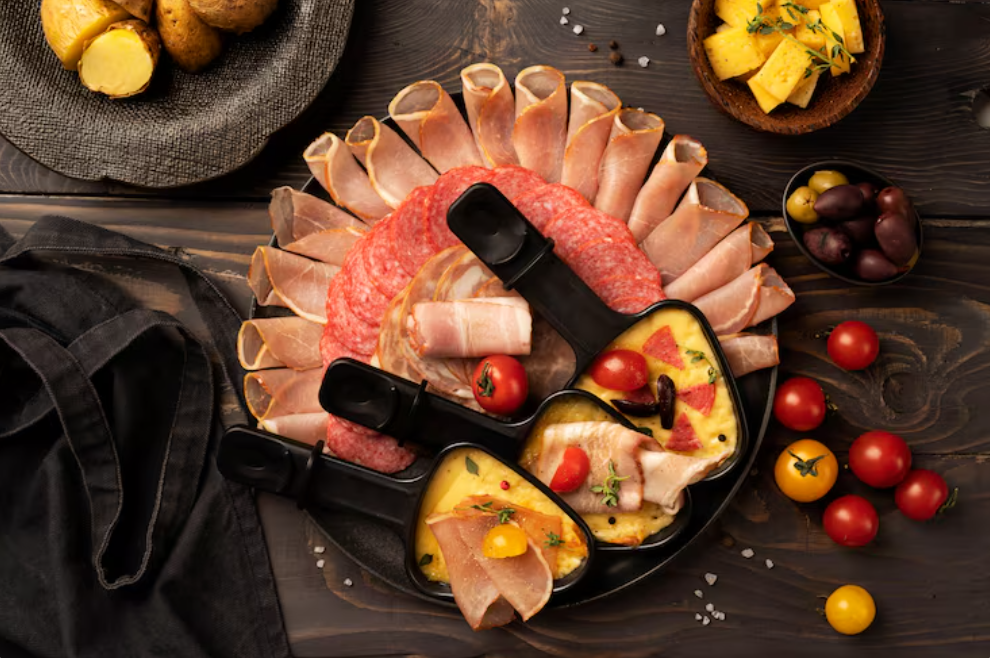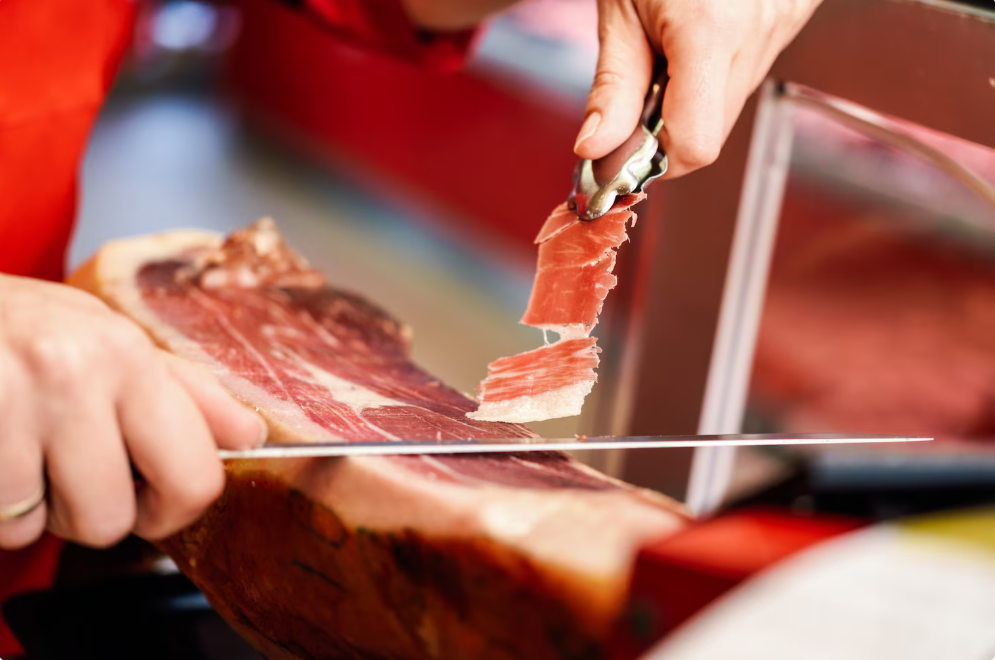Blog
The Irresistible World of Jamón: Spain’s Iconic Treasure

Jamón, the Spanish word for ham, is more than just a culinary delicacy—it’s a national treasure, a cultural symbol, and a gastronomic masterpiece that reflects centuries of tradition, patience, and craftsmanship. Whether it’s Jamón Serrano or the luxurious JamónIbérico, this cured meat stands as one of Spain’s most celebrated exports and a must-try experience for food lovers worldwide. The art of producing jamón is deeply rooted in Spanish history, transforming a simple leg of pork into a complex, melt-in-your-mouth delight through time, air, and salt.
The Origins of Jamón and Its Historical Significance
Jamón dates back to the ancient Iberians, who were curing meat as early as 2000 years ago. The Romans, upon conquering the Iberian Peninsula, admired this curing technique and documented the superior taste of Iberian ham. Over centuries, the process evolved, blending Roman preservation methods with Spanish mountain climates, giving birth to the unique curing art of jamón. Today, this legacy continues in Spanish villages and modern curing houses, combining old-world techniques with precision and quality control.
The Distinct Types of Jamón
In Spain, two main types of jamón dominate the culinary scene—Jamón Serrano and JamónIbérico. Jamón Serrano, typically made from white pigs, is known for its lighter, slightly salty flavor. It’s the more common variety, found in tapas bars and markets across Spain. On the other hand, JamónIbérico is made from the black Iberian pig and is revered for its deep flavor, silky texture, and aromatic fat that melts on the tongue. Within JamónIbérico, there are grades—ranging from JamónIbérico de Cebo (grain-fed) to the elite JamónIbérico de Bellota, where pigs feed freely on acorns in oak forests, resulting in unparalleled richness and nutty undertones.
The Art of Curing Jamón
The curing of jamón is an art that demands patience and precision. The process begins with salting, where the ham is buried in sea salt for about two weeks to draw out moisture and preserve it naturally. Afterward, it’s washed, rested, and hung in cool, ventilated rooms to dry and age for several months or even years. The length of the curing period determines the complexity of the flavor—some Iberian hams are aged for up to 48 months. This slow transformation under specific conditions results in the characteristic aroma, marbling, and deep red hue that makesjamón so special.
Why Jamón Is So Highly Valued
Jamón is often called the “caviar of Spain,” and for good reason. The intricate process, the quality of the pigs, and the time investment all contribute to its high value. Each leg of JamónIbérico de Bellota can cost hundreds or even thousands of euros, making it a luxury food item often served on special occasions. Beyond its price, jamón represents craftsmanship—a dedication to detail that captures the essence of Spain’s culinary passion and respect for tradition.
How to Serve and Enjoy Jamón
Serving jamón is an art form in itself. Traditionally, it’s sliced by hand using a long, sharp knife known as a jamonero, and each slice is cut paper-thin to release the perfect balance of aroma and taste. The slices are served at room temperature, often accompanied by bread, olive oil, and Spanish wine such as Rioja or Fino sherry. In Spain, jamón is not just food; it’s a centerpiece at celebrations, shared among friends and family, symbolizing warmth and hospitality.
Nutritional Value of Jamón
Despite being a cured meat, jamón offers a surprising array of nutritional benefits. It’s rich in protein, essential amino acids, and vitamins like B1, B6, and B12. JamónIbérico, especially the acorn-fed variety, contains high levels of healthy monounsaturated fats similar to those found in olive oil. These fats help reduce cholesterol levels, making moderate consumption of jamón a delicious yet healthy choice for many.
JamónIbérico de Bellota: The Pinnacle of Flavor
JamónIbérico de Bellota stands as the crown jewel of Spanish gastronomy. Its flavor comes from the free-range pigs that roam the dehesas (oak forests) of southern Spain, feeding on acorns and wild herbs. The acorns, rich in oleic acid, give the fat of the ham a buttery texture and sweet, nutty taste. Every slice tells a story of nature, nurture, and tradition—an edible piece of art that showcases Spain’s finest craftsmanship.
The Role of Terroir in Jamón Production
Just as wine reflects its terroir, so does jamón. The regions of Extremadura, Huelva, Salamanca, and Córdoba are famed for producing the best Iberian hams, thanks to their ideal climates and natural landscapes. The air, altitude, and temperature all influence the curing process, adding subtle regional variations in flavor. This connection between geography and taste makes jamón not only a product of Spain but also of its diverse environments.
The Cultural Significance of Jamón in Spain
In Spanish culture, jamón holds a place of honor. It’s present at every fiesta, wedding, and holiday celebration. Families proudly display their jamón legs at home, often hung in kitchens, ready to be sliced and shared. It symbolizes joy, generosity, and the Spanish love of life. Eating jamón is not just about nourishment—it’s an act of celebration and connection to heritage.
Jamón in Global Cuisine
The fame of jamón has spread far beyond Spain’s borders. Chefs worldwide incorporate it into gourmet dishes, from pastas and salads to seafood pairings and modern fusion recipes. Its versatility makes it a prized ingredient in fine dining. In countries like the United States and Japan, demand for authentic JamónIbérico has surged, turning it into a global symbol of culinary excellence.
Pairing Jamón with Wine and Cheese
For a truly indulgent experience, pairing jamón with the right wine and cheese is essential. The salty, savory flavor of Jamón Serrano pairs beautifully with young, fruity red wines or dry white wines. JamónIbérico, however, complements aged cheeses like Manchego and full-bodied wines such as Tempranillo or Syrah. These pairings enhance the ham’s rich profile, offering a harmonious balance that delights the palate.
The Modern Market for Jamón
The global demand for jamón has created a thriving market, both domestically and internationally. Spain exports thousands of tons each year, with JamónIbérico leading the luxury market. Producers have embraced sustainability, animal welfare, and traceability, ensuring each ham’s authenticity. From boutique shops to online gourmet platforms, jamón continues to captivate consumers seeking authentic Spanish flavor.
How to Choose the Right Jamón
When selecting jamón, it’s important to look for authenticity and labeling. True JamónIbérico is labeled according to its purity and diet—look for designations like “100% Ibérico de Bellota” for the highest quality. The label’s color bands (black, red, green, and white) indicate the type and origin. Additionally, the marbling, aroma, and texture give clues to its quality. A good jamón should have shiny fat, a firm yet flexible texture, and a deep, earthy scent.
Preserving and Storing Jamón Properly

To enjoy jamón at its best, proper storage is key. If you have a whole leg, hang it in a cool, dry place away from sunlight. Once opened, cover the exposed meat with its own fat slice or a clean cloth to prevent drying. Sliced jamón should be stored in airtight containers and consumed within a few days. Serving it at room temperature ensures you experience its full aroma and flavor.
Conclusion
Jamón is not just a food—it’s a story of heritage, craftsmanship, and passion passed down through generations. From the humble mountain curing sheds to the lavish tables of Michelin-starred restaurants, jamón connects Spain’s past and present through taste and tradition. Its allure lies in its simplicity, yet each bite reveals layers of complexity that can only come from patience, respect for nature, and time-honored skill. Whether you’re savoring a slice of Jamón Serrano or indulging in JamónIbérico de Bellota, you’re tasting centuries of Spanish artistry.
FAQs
What makes JamónIbérico different from Jamón Serrano?
JamónIbérico comes from black Iberian pigs, known for their rich, nutty flavor and marbled fat, while Jamón Serrano is made from white pigs and has a milder taste.
How long does it take to cure JamónIbérico?
Depending on the variety, JamónIbérico is cured for 24 to 48 months, allowing its flavors to develop fully.
Is jamón healthy to eat regularly?
Yes, in moderation. It contains healthy fats, proteins, and vitamins, especially JamónIbérico de Bellota, which has heart-healthy monounsaturated fats.
Can jamón be cooked, or should it only be eaten raw?
Jamón is typically eaten raw in thin slices, but it can also be added to cooked dishes to enhance flavor.
What is the best way to slice jamón at home?
Use a jamonero stand and a long, sharp knife to cut thin, even slices across the grain for the best texture and taste.
-

 Tech1 year ago
Tech1 year agoHow to Use a Temporary Number for WhatsApp
-

 Business2 years ago
Business2 years agoSepatuindonesia.com | Best Online Store in Indonesia
-

 Social Media1 year ago
Social Media1 year agoThe Best Methods to Download TikTok Videos Using SnapTik
-

 Technology1 year ago
Technology1 year agoTop High Paying Affiliate Programs
-

 Tech10 months ago
Tech10 months agoUnderstanding thejavasea.me Leaks Aio-TLP: A Comprehensive Guide
-

 FOOD1 year ago
FOOD1 year agoHow to Identify Pure Desi Ghee? Ultimate Guidelines for Purchasing Authentic Ghee Online
-

 Instagram3 years ago
Instagram3 years agoFree Instagram Auto Follower Without Login
-

 Instagram3 years ago
Instagram3 years agoFree Instagram Follower Without Login




















